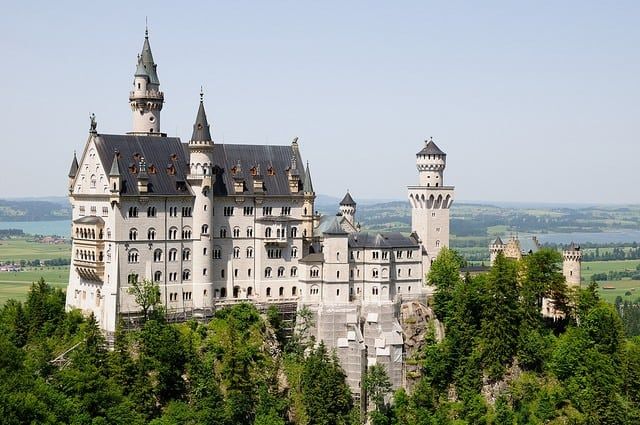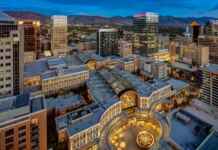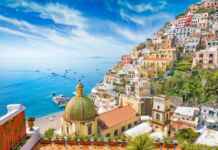Neuschwanstein Castle was commissioned by Ludwig II of Bavaria as a retreat and as a homage to Richard Wagner, German composer whom he greatly admired. The word Neuschwanstein literally means “New Swan Castle” referring to “the Swan Knight” one of the Wagner’s characters. In 1869, the first stone for the castle was laid and it was opened to the public in 1886, immediately after Ludwig’s death. Designed by Christian Jack, originally a theatre designer, the location of Neuschwanstein Castle, with its surrounding mountains is absolutely idyllic. It personifies the romantic idea of a castle with a fairytale like ambience. Thus, it is not surprising that the Neuschwanstein Castle happens to be one of the most photographed tourist spots in the world.
In a sense, the construction of Neuschwanstein Castle, nestled in a fairytale like setting, is also associated with tragedy. This is because despite getting it constructed for his own retreat, Ludiwg slept only eleven nights in the Neuschwanstein Castle. Also, Richard Wagner was the main source of inspiration behind the creation of this castle, to the extent that many rooms of the castle were inspired by Wagner’s operas. Despite this, Wagner never visited the castle, as he died before its completion.
Fussen usually experiences tourist inflow throughout the year. However, the most popular months are May to September as winters begin in Germany post September, thereby making the weather harsh for most visitors. Moreover, during these months, the weather is warmer outside thereby making numerous opportunities available for visitors to enjoy the beautiful outdoors. Rain can fall in Fussen at any time, and snow can fall during the winter months. So tourists ought to plan their trip to Neuschwanstein Castle accordingly.
The Neuschwanstein Castle is situated above the village of Hohenschwangau near Füssen in southwest Bavaria, Germany. The closest airport to it is the city of Munich, 128km to the north east. Therefore, visitors have a variety of options to access the Neuschwanstein Castle. There are direct trains which leave about every two hours from Munich to Fussen. From Fussen, visitors can hop on to bus 9713 to Hohenschwangau. Many bus tours also are operated to Füssen from most parts of southern Bavaria, often including a visit to the Neuschwanstein Castle.
Visitors to Neuschwanstein Castle should note that the ticket center is in Hohenschwangau and they should be purchased before one starts the climb to the castle. The tickets cost 9 Euros for an adult. There are numerous steps which finally land the visitor to the castle. One can choose to take a horse-drawn carriage, a bus or walk up to the castle. Also, the castle is open daily except for 1 January and 24 / 25 / 31 December. So, visitors should plan their trip accordingly.
The Neuschwanstein Castle is rich in craftsmanship and architectural details, showcased in the fifteen rooms which the tourists can access. Wagner’s operas feature everywhere in the form of murals. Ludwig’s sleeping quarters show a clear Gothic influence. The dressing table has a swan-shaped tap inspired by ‘Lohengrin’. It is highly recommended that visitors walk to the nearby Mary’s Bridge (Marienbruecke), a 45m waterfall to enjoy the best view of the castle.
To relive all your childhood fairy tales, Neuschwanstein Castle is the place to visit!










